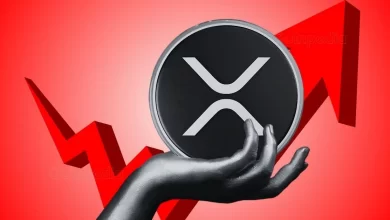A Complete Guide: How to Spot Crypto Scams and Protect Yourself
Say you see a post online about a new crypto project. It promises insane returns. “Double your Bitcoin in a week!” Sounds tempting, right? You check the website—it looks legit. There’s even a countdown timer urging you to act fast. You take the leap, send your money… and boom, it’s gone. No support. No refunds. Just silence.
Welcome to the world of crypto scams.
Scammers are everywhere in the crypto space. From fake investment schemes to rug pulls, they are always looking for their next victim. But don’t worry—I’ll help you stay ahead. By the end of this, you’ll know exactly how to spot these scams, how they work, and whether it’s possible to track down these fraudsters.
Step-by-Step: How to Identify a Crypto Scam
1. Promises of High, Guaranteed Returns
Scammers love to bait victims with unrealistic returns. If someone promises you guaranteed profits in crypto, run. Nothing in crypto is guaranteed.
Red Flag: “Earn 10x your investment in just a month!”
What to Do: Check their track record. Look for real user experiences, not just testimonials on their website.
2. Pressure to Act Fast (FOMO Tactics)
Scams create urgency. They say things like “Limited slots available!” or use countdown timers to push you into a rushed decision.
Red Flag: “Join now! Only 2 hours left before the price doubles!”
What to Do: Take a step back. Do your research. If it’s a good opportunity, it won’t disappear overnight.
3. Anonymous Teams or Fake Identities
Legit crypto projects have founders and teams with a history in the space. Scams often have anonymous or fake profiles.
Red Flag: No clear team info or founders with zero online presence.
What to Do: Google their names, check LinkedIn, and look for interviews. If you find nothing, that’s a big warning sign.
4. No Clear Whitepaper or Vague Roadmap
A whitepaper should explain a project’s goals, technology, and plans in detail. Scams either don’t have one or fill it with buzzwords.
Red Flag: “We use AI and blockchain to revolutionize finance!” but no actual explanation.
What to Do: Read the whitepaper. If it’s vague or full of technical fluff without real substance, stay away.
5. Suspicious Social Media and Marketing
Scams rely on hype and aggressive marketing. They use paid influencers and bots to create the illusion of a booming project.
Red Flag: Thousands of followers, but no real engagement. Comments are mostly bots saying, “Great project!”
What to Do: Look for organic discussions on Reddit, Twitter, and Telegram. If it’s all hype and no substance, it’s a red flag.
6. Unverifiable Partnerships or Endorsements
Scammers claim to be backed by big names to gain trust. Always verify their claims.
Red Flag: “Endorsed by Elon Musk!” (Hint: He didn’t.)
What to Do: Check official sources. If Tesla, Binance, or another major player hasn’t announced the partnership, it’s fake.
7. No Clear Way to Withdraw Funds
Some scams let you deposit funds easily but make it impossible to withdraw.
Red Flag: “Withdrawal requests take 30 days to process” or “You must recruit others to unlock your earnings.”
What to Do: Test withdrawals before putting in large amounts. If they delay or deny withdrawals, get out.
8. Ponzi and Pyramid Schemes
If a project pays old investors using new investors’ money, it’s a Ponzi scheme. If it rewards you for recruiting others, it’s a pyramid scheme.Red Flag: “Invite 3 friends and get 20% commission on their deposits!”
What to Do: If earnings rely on recruitment, it’s a scam. Real investments don’t need referrals to generate profit.
Real-World Crypto Scams That Fooled People
OneCoin (2014-2017) – A $4 Billion Scam
OneCoin was marketed as the “Bitcoin killer.” It promised huge returns, had flashy events, and claimed partnerships with top banks. Turns out, the coin didn’t even exist. It was a Ponzi scheme. The founder, Ruja Ignatova, vanished in 2017 and is still on the FBI’s Most Wanted list.
Bitconnect (2016-2018) – The Infamous Ponzi Scheme
Bitconnect promised 1% daily returns with an automated trading bot. Investors kept pouring in money—until it collapsed in 2018. Thousands lost millions.
Squid Game Token (2021) – The Ultimate Rug Pull
Capitalizing on the hype of the Netflix show, scammers launched a Squid Game token. The price skyrocketed, but when investors tried to sell, they couldn’t. The developers ran off with millions overnight.
These scams show that even smart investors can be fooled. The key is to stay skeptical and do your own research.
Can You Trace a Crypto Scammer?
Sort of. Crypto transactions are on the blockchain, which is public. But scammers use tricks to cover their tracks.
1. Following the Money Trail
Every crypto transaction has a record. You can track scam wallets using blockchain explorers like Etherscan or Bitcoin’s block explorer. But tracing a wallet doesn’t always reveal who owns it.
2. Mixers and Privacy Coins
Scammers use “mixers” (Tornado Cash, Blender.io) to make funds untraceable. They also use privacy coins like Monero, which hide transactions completely.
3. IP and Exchange KYC Data
If a scammer cashes out through a regulated exchange, authorities can trace them using KYC (Know Your Customer) data. This has helped law enforcement catch scammers before.
4. The FBI and Blockchain Analytics Firms
Big cases like OneCoin and Bitconnect were cracked using blockchain forensics. Companies like Chainalysis help track stolen funds, and agencies like the FBI and Interpol are getting better at tracing criminals.
Can You Get Your Money Back?
It’s tough, but not impossible. If the scammer used an exchange with KYC, legal action might work. Some victims recover funds through lawsuits, but most don’t. Prevention is the best defense.
Final Thoughts: Stay Smart, Stay Safe
Crypto is an exciting space, but scams lurk around every corner. If something sounds too good to be true, it probably is. Take your time, do your research, and never invest based on hype alone.
Stay informed, stay cautious, and you’ll avoid becoming another scam statistic.











